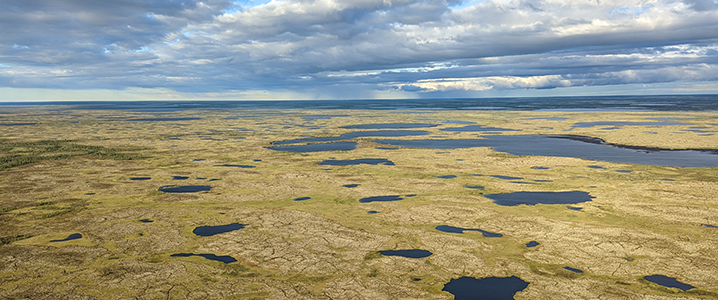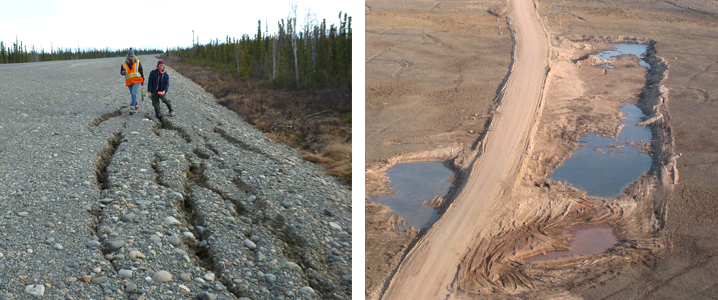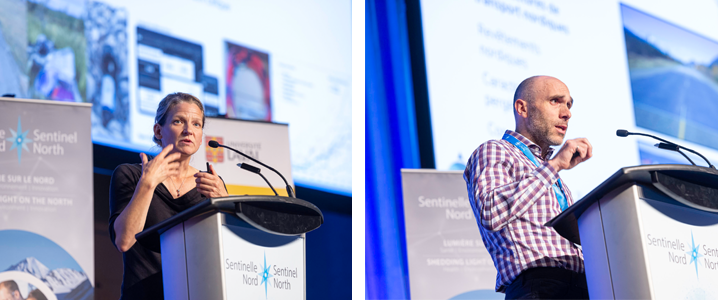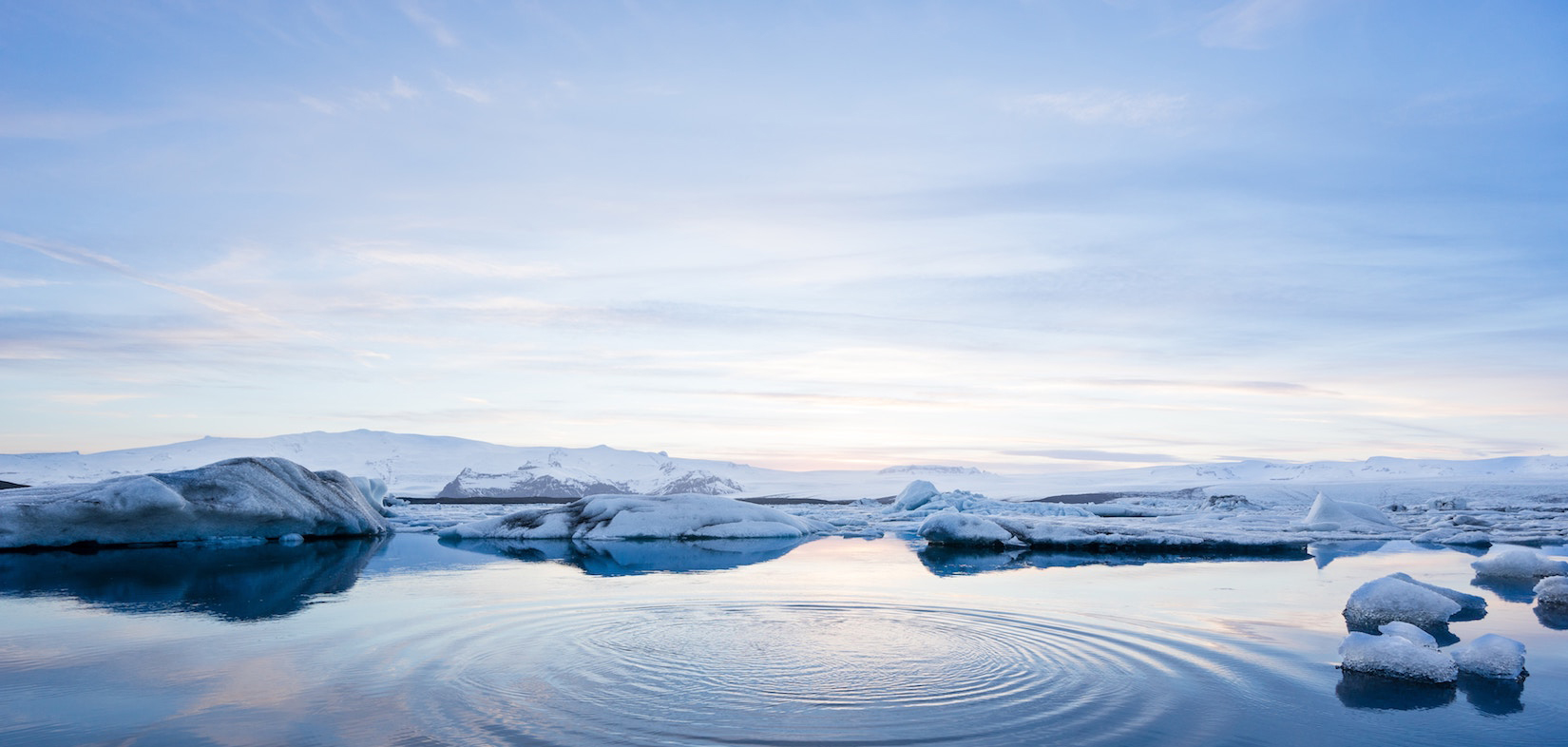Adapting infrastructures to a thawing permafrost
Published on 20 Feb 2025
Climate change is visible to the naked eye, not only in the northern landscape, but also in its infrastructures. Research teams at Sentinel North are developing solutions to mitigate the effects of these unprecedented climatic upheavals.
In one of Nunavik’s fourteen northern communities, the clock is ticking. A severely injured person needs to be urgently evacuated south by plane, the only fast and efficient route available. But there is one problem: the aircraft is unable to land because the runway has recently started showing worrying signs of deterioration. This is in large part due to global warming, which is four times faster in the Arctic regions than in the rest of the world1 and has accelerated the thaw of the permafrost on which the infrastructure was built.
Although entirely fictitious, this scenario is not limited to the realm of science fiction. “The airport needs to be operational for these communities; it’s a matter of public safety,” says Jean-Pascal Bilodeau, a professor in the Department of Civil Engineering and Water Engineering at Université Laval who holds the Sentinel North Partnership Research Chair on Northern Infrastructure. His work focuses on the development of innovative, resilient and sustainable infrastructures in a changing North. “Some factors, such as climate change, which in the past were rarely taken into account when building infrastructures, have now become decisive.”
This is the case for soil compaction and land subsidence on ground that was formerly permanently frozen. These permafrost phenomena, known as thermokarsts, are at the core of the research carried out by Pascale Roy-Léveillée, a professor in the Geography Department at Université Laval who holds the Partnership Research Chair on Permafrost in Nunavik. “The geomorphological changes are visible to the naked eye, in both the infrastructures and the landscapes,” she points out. “Because they don’t manifest themselves in the same way everywhere, there’s a genuine need to characterize the permafrost.”

Legend: Geomorphological changes caused by thawing permafrost are transforming the landscape, as evidenced by the formation of thermokarst ponds.
Credit: Emmanuel L'Hérault
Working with and for northern communities
These scientists are seeking to develop new knowledge of the interactions between the natural and built environments in the North. To this end, they are combining several techniques which go far beyond tracking soil temperature. “We start by mapping the geomorphology and surface conditions, in particular through remote sensing technology which allows us to see what happens with each passing season,” Pascale Roy-Léveillée explains. “We then sample the permafrost in different types of deposits, among other things to measure their ice content.”
Taken together, these data provide a map of the expected responses on the ground, something that is very useful for engineers like Jean-Pascal Bilodeau. He can, for instance, refer to this map to better assess, both in the laboratory and in the field, the mechanisms and factors affecting the performance of infrastructures built on the permafrost. This work will ultimately help design roads that are better adapted to northern weather conditions. “The intended goal is for these infrastructures to be able to provide their services irrespective of climatic stressors,” he explains. His team is also working on technological solutions, such as fiber optic sensors that perform autonomous, real-time infrastructure monitoring, as well as the use of machine learning to better understand the underlying phenomena and mechanisms, and predict infrastructure responses.

Legend: Innovative solutions are needed to offset the deleterious effects of thawing permafrost on infrastructures such as roads.
Credit: Jean-Pascal Bilodeau
The issues associated with permafrost are complex and require innovative approaches, such as collaborations between different disciplines, as well as with representatives of Nunavik’s northern communities who are, after all, first-hand witnesses to this major climate change adaptation project. “It’s the coolest part of our work!”, Professor Roy-Léveillée exclaims. “Instead of imposing our southern-based knowledge, we are co-developing solutions that truly address the realities of the North.” All the more so as Sentinel North facilitated these partnerships, as Jean-Pascal Bilodeau mentions.
A well-equipped future generation
Although the Sentinel North program will soon be coming to an end, these researchers are planning to continue their collaborative work over the coming years. “Sentinel North has created a space where we were encouraged to work with others,” Pascale Roy-Léveillée says. “We are a team of experts from different disciplines who are able to work together to address issues related to permafrost thaw. It’s of inestimable value. Working together on a concrete and well-defined problem was conducive to building these interdisciplinary ties.”

Legend: Pascale Roy-Léveillée and Jean-Pascal Bilodeau will co-chair sessions at the 2025 Sentinel North Scientific Meeting.
Credit: Dany Vachon
Many students have been involved in the projects over the years and Professor Bilodeau sees it as one of Sentinel North’s greatest legacies. “They are now familiar with the interdisciplinary and collaborative approach to research,” the professor and geological engineer points out. In this sense, the new generation is well equipped to tackle the challenges faced by tomorrow’s North. “Watching these young scientists as they evolve is an absolute pleasure,” he says proudly. “From the moment that they walk through our doors until the day, years later, when they leave, they will acquire considerable experience.”
1 Rantanen, M. et al. (2022). The Arctic has warmed nearly four times faster than the globe since 1979. Communications Earth & Environment.

